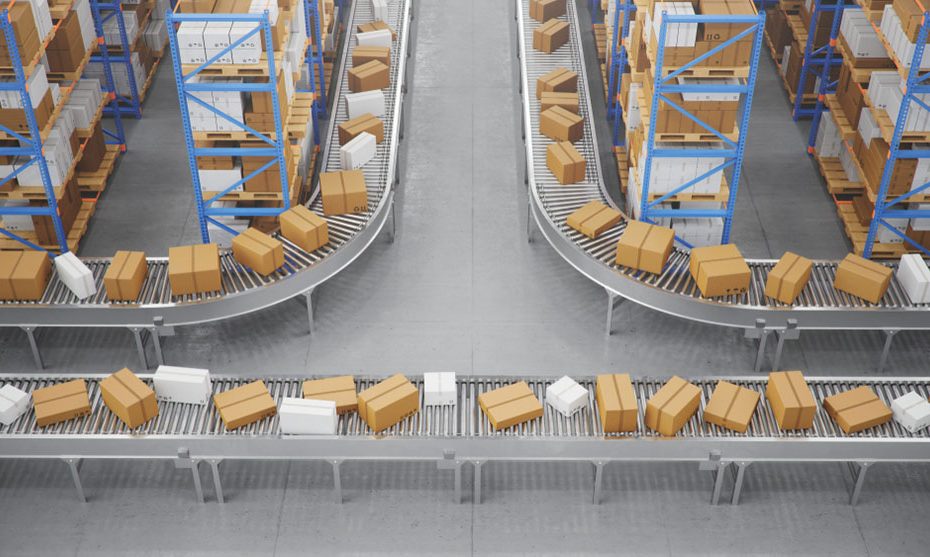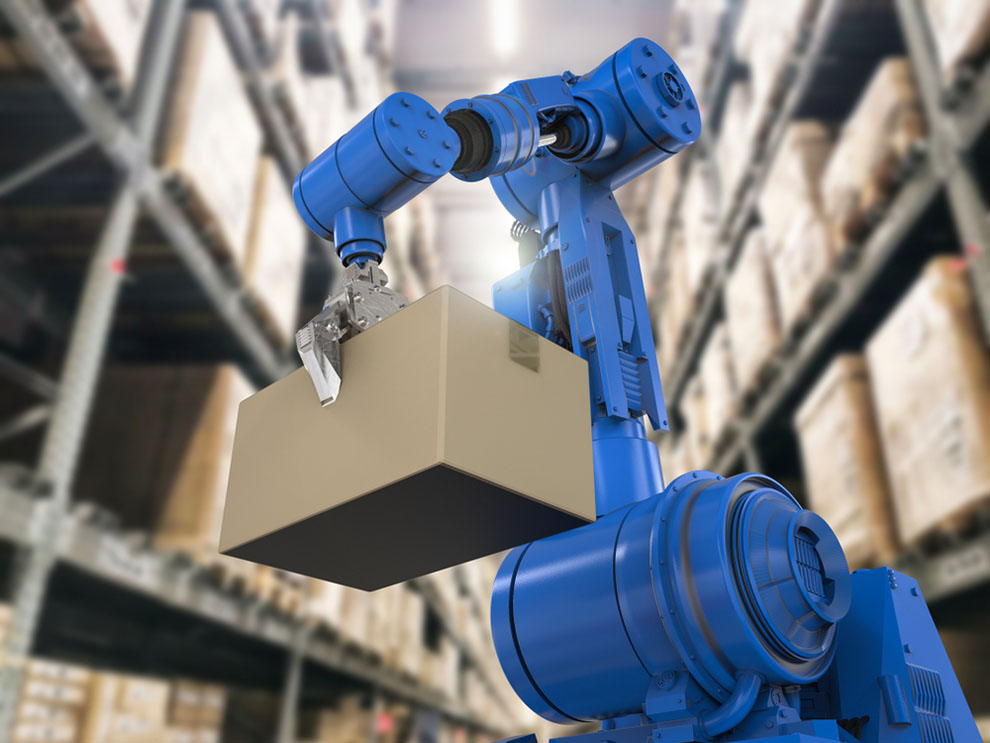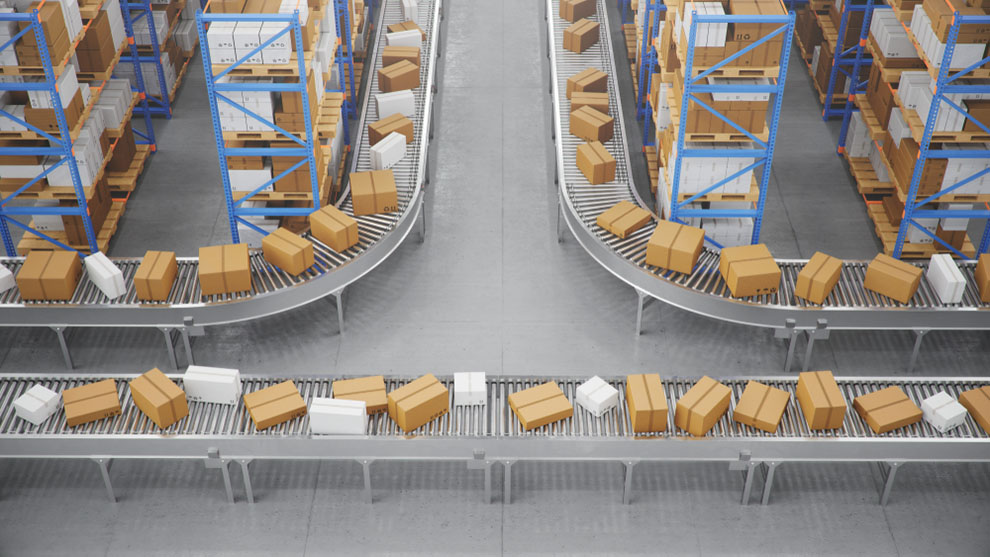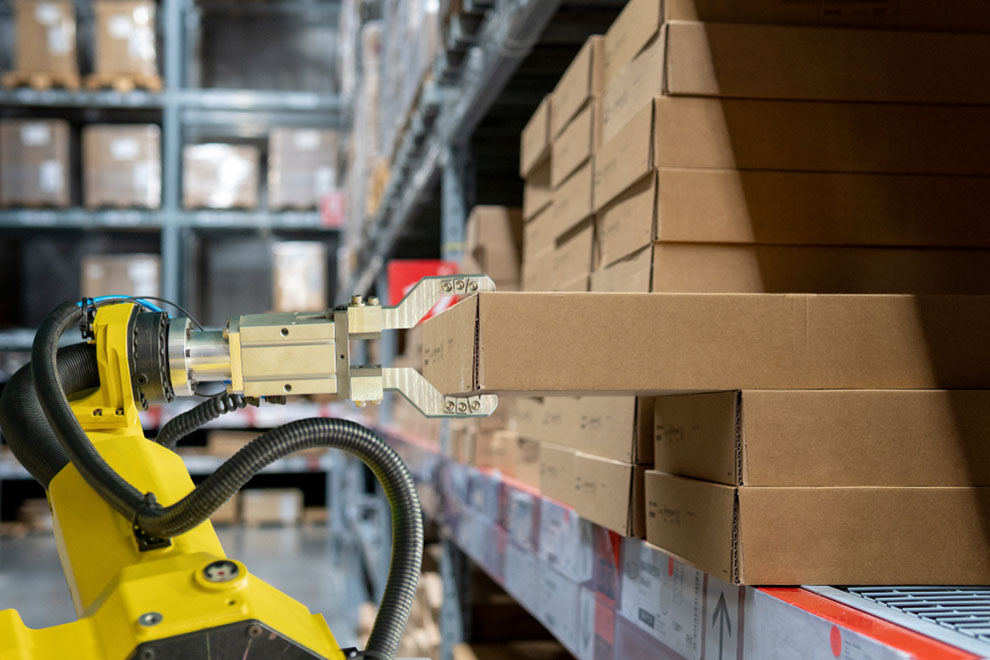Source: Phonlamai Photo/Shutterstock.com
So, you want to invest in warehouse automation, but you’re not sure how much it costs? The answer all depends on the scale of your operations and what you’re looking to achieve. You don’t need to automate your entire facility to improve efficiency and reduce costs.
Stack Racks Help Keep Your Warehouse Organized and Free Up Space
Before you invest in this technology, you should have a clear budget in mind. Use this figure to calculate how much you can afford and how soon you expect to reach your respective ROI. The good news is that automation can help you save thousands of dollars every day so you’ll need to factor these savings into your decision as well. Studies show labor costs account for anywhere between 60 and 65 percent of a warehouse’s order fulfillment costs, not including the cost of shipping.
The Price of Automation
The costs associated with automating a warehouse can vary greatly based on a number of factors, including the manufacturer of the equipment, size and type, as well as shipping and the cost to implement this technology.
Source: Rost9/Shutterstock.com
Let’s start with some of the least expensive items. Conveyor belts can help move your products throughout the facility in less time than it would take a person to walk back and forth. Use stack racks to organize your inventory to reduce space and keep your most popular products close to the loading dock.
Plastic Pallets Are Just as Durable and More Affordable Than Regular Ones
People often think of smart pickers and stockers and automated forklifts when it comes to warehouse automation. A single robotic arm can easily cost you anywhere from $50,000 to $80,000. When you factor in the cost of controllers and application-specific peripherals, each machine could carry a price tag of $100,000 to $150,000. Multiply that by the number of pickers and stockers you’ll need to reach every corner of your warehouse.
Source: Pand P Studio/Shutterstock.com
Every manufacturer is different, and some have better reputations than others. Research various warehouse automation companies to find the right fit and price for your business.
You will also need to upgrade your storage containers to make sure they fit with this new technology. Invest in reusable storage containers that retain their physical dimensions to avoid delays and unexpected equipment failures. Use plastic pallets and stackable warehouse storage bins that mesh well with your new technology.
Lastly, don’t forget to choose a warehouse management system (WMS) to monitor your inventory and orders. Some systems may be free, but expect to pay a monthly fee up to $100 for large facilities and programs with special features.
Don’t forget to factor in the cost of training, shipping, installation and repairs.
For the average warehouse, the cost of full automation can easily clock in at around $25 million. Semi-automated facilities tend to cost between $5 and $15 million.
Potential Savings
Once you have an idea of how much you can expect to get for your money, factor in how much you intend to save on labor, including the cost of healthcare, pensions, insurance, workplace accidents and other fees associated with paying a crew.
You will still need some workers on the floor to supervise your new operations. Some facilities will use human-assistance robots, or cobots, to reduce the physical pressures of fulfilling orders and manufacturing goods. Figure out how many workers you intend to keep on and how they will spend their time. Don’t forget to have your team physically inspect your inventory to make sure the WMS stays up to date.
Automation will also improve order accuracy, while speeding up virtually every aspect of your operations. You may be able to get more orders out the door using fewer resources, helping reach your ROI that much faster.
Implementing Warehouse Automation
It’s best to pad your budget in case you run into any problems along the way. Mistakes are bound to happen as your team gets used to this technology. You may have to spend time recruiting and hiring workers with experience implementing these systems to smooth out the process.
Consider hiring a consultant as well to help ease the transition. They will evaluate your existing operations and make specific recommendations, so you don’t waste your money on equipment that you don’t need.
When looking over your operations, you may decide to go slow and invest in one piece of equipment at a time. This gives your team the chance to adjust to the new workflow. However, every facility is different. Research the application of online supervisory control of discrete-event systems to multi-robot warehouse automation. Keep these tips and figures in mind as you experiment with the future of warehousing.



